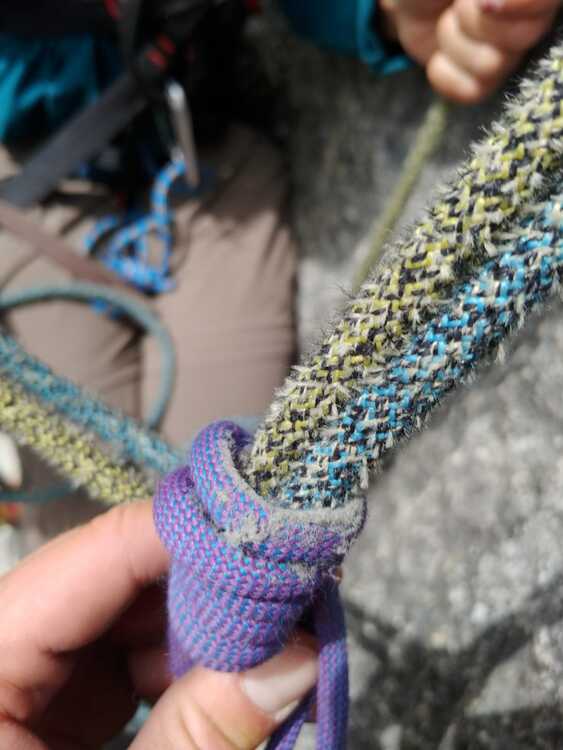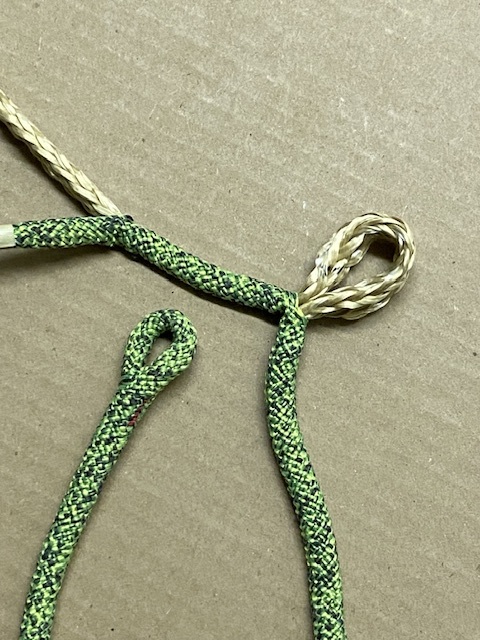Edelrid Starling Protect aramid durability
|
|
I've been using the these doubles ropes for the last year and a half or so for mostly summer rock climbing. Pretty quickly the aramid (gray part of the rope in the picture) started to wear, and already at the start of the second season I had to reassure my climbing partners that the ropes were relatively new, and they're (probably) not that sketchy. If you look close at the rope (it looks like this over the whole length of the ropes), it's just the aramid that's coming off, not the rest of the (normal) nylon. I've asked Edelrid about this, and they say that this is normal...anyone else had this experience with these ropes? FWIW I also have the 8.9mm version, which seems to be faring a lot better. |
|
|
bump |
|
|
I've talked to a friend about this, he was concerned at first but then it just never gets worse for some reason. |
|
|
My 8.9 protect shows the same wear. Looked bad at first but hasn't seemed to deteriorate further. Though rope drag is noticeably worse |
|
|
First pictures I've seen but all professional and amateur reviews I've read mention the quick fuzziness, but then it levels out. Does it level out? Or does the fuzziness just stay the same length as more is ripped off? Looking at your klemheist it seems like a bunch of aramid has been torn off on just this one rappel. |
|
|
Wow those are mega fuzzy. I get the concern, I’m normally pretty chill with ropes & if it ain’t coreshot… but when ropes start feeling like “playground ropes” i.e. mega fuzzy & soft vs a climbing rope… I generally replace. |
|
|
Must suck up water a lot being so fuzzy. And what good is the aramid when it’s wearing out so fast? |
|
|
Stefan Jacobsen wrote: that's been the question on my mind... |
|
|
Aramid (aka Kevlar) fibers are brittle and have a four-decades-long history of breaking down during repeated flexing. Lowering climbers and rappelling force ropes through tight bends under big loads. While aramid initially provides excellent cut resistance, it will probably lose some of that property with significant use. |
|
|
It’s not the aramid, kevlar’s pc name, that is fuzzing up its the nylon, which is white, Kevlar is a light tan. Each strand of the Starling is made up of three smaller ones, two different colored nylon ones and one of the aramid. Kevlar core of the BUL below. Looking closer at your picture I can see the smooth tan smaller strands in the blue rope. |
|
|
Interesting, haven't noticed increased rope drag. Though maybe I haven't though to attribute it to this.
Seems to have leveled off at this length. About this much will come off every rappel.
I actually I feel fine about them because I know every single pitch they have been on, but definitely more than a couple of my partners have made comments about them. And I guess psychology is a large component of replacing ropes, when you no longer feel psyched to climb on them.
My thought as well. I really would like to see how much cut resistance they still have, or if the main reason I bought these ropes has already been worn out after a year and a half. |
|
|
FWIW a few months ago I asked Edelrid support about this and they responded:
|
|
|
Brocky wrote: You sure about this? I think it's the nylon part that isn't fuzzed. TBH if all the fuzz was somehow taken out as is, the ropes would look in great condition. There's hardly any wear on the yellow/blue threads. |
|
|
Okay let me give you the technical answer. Aramid has pretty poor toughness it's a very static relatively brittle polymer, this will result in relatively poor abrasion resistance compared to softer tougher polymers such as polyester or nylon(still great cut resistance but that's a whole different thing). As others have said aramid has historically had the tendency to self abrade and break down seemingly on its own, but advances in technology over the last 40 years has significantly improved on this draw back, so much so that now we can have aramid cores in things like ropes and slings and it be a non issue, in the 80s they tried this and the aramid practically turned to dust within a few years. Aramid while in a raw form can range from a tan to bright yellow, it can be dope dyed in a similar way to uhmwpe(dyneema) to get more or less any colour. |

 Continue with onX Maps
Continue with onX Maps Sign in with Facebook
Sign in with Facebook





















